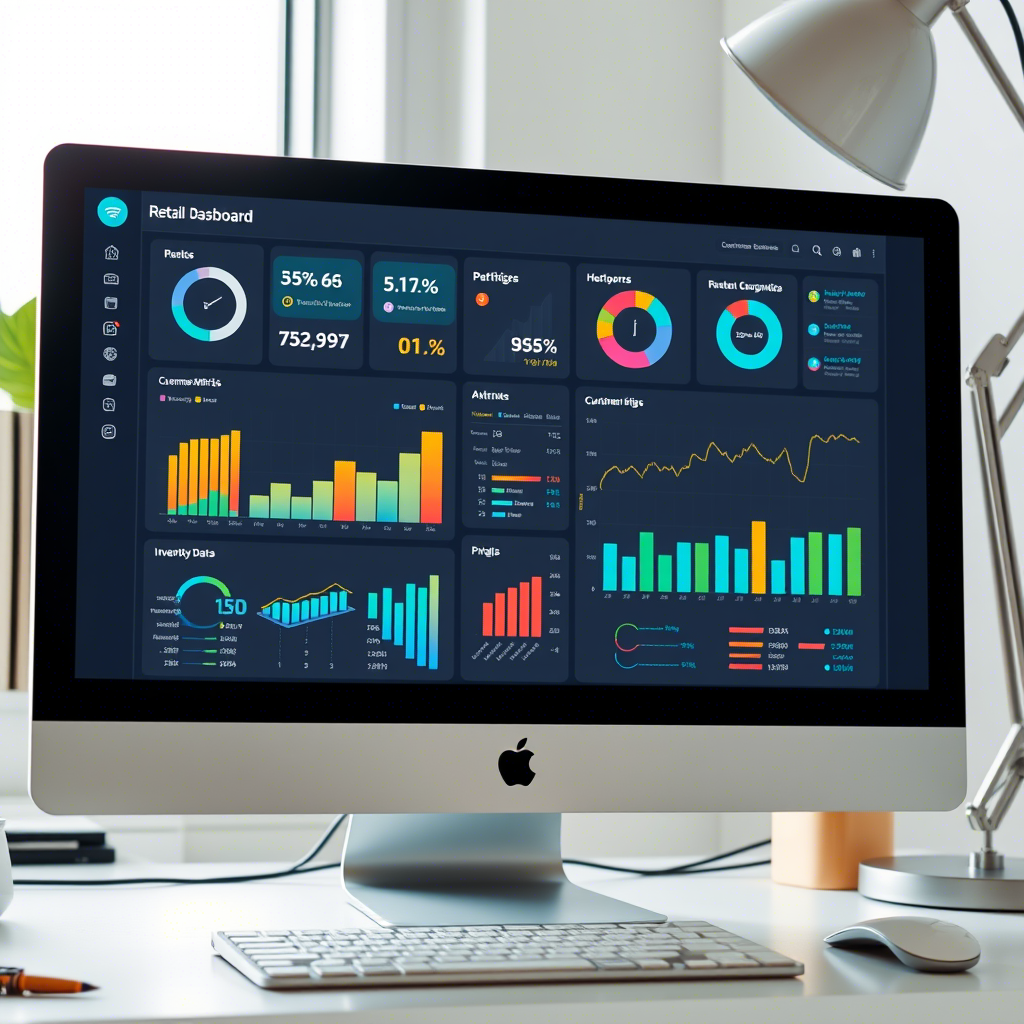
Getting Started with Retail Analytics
10 min read
Introduction to Retail Analytics
Retail analytics involves the use of data to understand and optimize retail operations and customer experiences. It helps businesses make informed decisions by analyzing sales trends, customer behavior, inventory levels, and more.
In this guide, you'll learn the fundamentals of retail analytics and how to implement them in your business effectively.
Why Retail Analytics Matters
Retailers face increasing competition and changing consumer expectations. Retail analytics offers insights that can:
- Improve inventory management
- Enhance customer satisfaction
- Optimize pricing strategies
- Predict future trends
Key Components of Retail Analytics
1. Sales Data Analysis
Analyze historical and real-time sales data to identify patterns and opportunities for growth. Tools like dashboards and reports help visualize this data effectively.
2. Customer Behavior Tracking
Understand your customers' preferences and shopping habits through metrics like purchase frequency, average order value, and product affinity.
3. Inventory Optimization
Use predictive analytics to manage stock levels efficiently, reducing overstock and stockouts while ensuring popular items are always available.
Physical Interventions Necessary for Analytics Success
While analytics provides valuable insights, physical interventions are often necessary to ensure its success. These include:
- Store Layout Adjustments: Rearranging shelves, optimizing product placement, or improving signage based on analytics findings.
- Staff Training: Educating employees on interpreting analytics data and implementing changes effectively.
- Inventory Audits: Conducting manual checks to verify automated inventory tracking systems.
- Customer Feedback Collection: Engaging directly with customers to gather qualitative insights that complement quantitative data.
- Technology Maintenance: Ensuring hardware like barcode scanners, POS systems, and sensors are functioning correctly.
Common Issues That Distort Analytics Outcomes
A purely analytics-driven process may lead to inaccurate conclusions if certain factors are overlooked. Common issues include:
- Data Quality Problems: Incomplete, outdated, or incorrect data can skew results. For example, missing transactions or duplicate entries.
- Over-reliance on Historical Data: Past trends may not always predict future behavior, especially in rapidly changing markets.
- Ignores External Factors: Analytics may fail to account for external influences like weather, economic shifts, or competitor actions.
- Bias in Data Interpretation: Human biases can influence how data is analyzed and applied, leading to flawed decision-making.
- Lack of Context: Numbers alone don’t tell the whole story. Without understanding the context behind the data, insights may be misinterpreted.
- Technical Glitches: Software bugs, system downtime, or integration errors can disrupt data collection and analysis.

Implementing Retail Analytics in Your Business
Step 1: Define Clear Objectives
Determine what you want to achieve with retail analytics—whether it's improving sales, reducing costs, or enhancing customer experience.
Step 2: Collect Relevant Data
Gather data from various sources such as point-of-sale systems, e-commerce platforms, social media, and customer feedback surveys.
Step 3: Choose the Right Tools
Select analytics tools that fit your needs. Popular options include Google Analytics, Tableau, Power BI, and specialized retail software solutions.
Step 4: Analyze and Act on Insights
Regularly review your analytics reports and take actionable steps based on the insights gained.
Best Practices for Success
- Ensure data accuracy and consistency across all channels.
- Train your team to interpret and utilize analytics effectively.
- Continuously test and refine your strategies based on new data.
Conclusion
Retail analytics is a powerful tool that empowers businesses to make smarter decisions and stay competitive. However,
By understanding its fundamentals and implementing best practices, you can unlock significant value for your organization.
About the Author
PG Van Der Westhuizen
Seasoned retail expert with 3 decades of transformative retail experience



